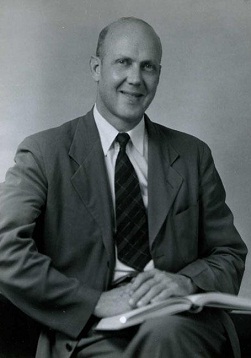During the 1930s North Carolina received federal money for historic preservation through the Works Progress Administration, part of President Franklin D. Roosevelt's New Deal. Federal funds permitted the restoration of the John Wright Stanley House in New Bern, as well as Buck Hill, the 1781 home of Nathaniel Macon. Federal money also funded various archaeological excavations across the state and the indexing of archival records.
In 1955 the General Assembly transferred administrative control of state historic sites to the Division (now Office) of Archives and History, which expanded to cover many areas of preservation, including protection of properties on the National Register of Historic Places, aiding historical museums, and evaluating potential state historic properties. The North Carolina Museum of History also expanded to include four locations in Raleigh, Fayetteville, Elizabeth City, and Old Fort, together housing more than 250,000 artifacts. The State Historic Preservation Office aids private citizens and institutions, as well as local, state, and federal groups in identifying and protecting historically significant North Carolina properties and archaeology. The office also nominates eligible properties to the National Register of Historic Places, provides technical assistance to owners in the restoration of historic properties, and aids with state and federal rehabilitation, income tax credits, and grant assistance for the preservation of historic projects.
Maintained by the National Park Service, the National Register of Historic Places is the nation's official list of historic properties worth preserving. It constitutes an important component of a larger preservation program operated as a partnership among federal agencies, states, local governments, American Indian tribes and Alaska natives, and private preservationists. North Carolina made its first nominations to the National Register of Historic Places in 1969; more than 2,100 listings represented all 100 counties by the early 2000s. Of these listings, approximately 300 are historic districts, including residential neighborhoods, commercial districts, prehistoric and historic archaeological districts, industrial complexes, mill villages, and rural farming districts.
Preservation North Carolina (PNC), officially the Historic Preservation Foundation of North Carolina, Inc., is a private, nonprofit, statewide fund for historic preservation, with a mission to protect and promote buildings, landscapes, and sites important to the heritage of North Carolina. PNC receives little financial support from the state or federal government, relying primarily on private donations and membership fees. Through its revolving fund, the group purchases endangered historic properties, places protective covenants in the deeds, and then sells the properties to private buyers willing to restore them. Once a property sells, PNC uses the proceeds from the sale for another property.

Preservation North Carolina's origins coincide with North Carolina's federally funded preservation projects in the 1930s. A significant private preservation effort began in 1938, when C. Christopher Crittenden, secretary of the North Carolina Historical Commission, invited Margaret Wilmer, president of the Association for the Preservation of Virginia's Antiquities, to speak to the North Carolina Historical Commission on preservation endeavors in Virginia. Mrs. Wilmer's report inspired commission member Ruth Coltrane Cannon and others to call for the formation of a steering committee to establish a similar organization in North Carolina. Through the successful efforts of the steering committee, the North Carolina Society for the Preservation of Antiquities was launched on 5 Oct. 1939.
The Antiquities Society held its first annual meeting on 7 Dec. 1939. The meeting brought to the forefront the need to restore colonial Tryon Palace in New Bern, and the next year the group gave its first grant of $200 to Tryon Palace as well as providing additional grant money for the Clerk's Office in Halifax, Richmond Hill in Yadkin County, and the Andrew Johnson birthplace in Raleigh. World War II temporarily delayed further efforts to restore Tryon Palace, but in 1944 Maude Moore Latham created the Maude Moore Latham Foundation to help purchase the land where Tryon Palace once stood as well as additional money to reconstruct a public museum and park.
Activities of the Antiquities Society quickly accelerated over the next decades. In 1974 the organization's name was changed to the Historic Preservation Society of North Carolina, Inc., and the group hired its first full-time professional staff in 1981. Since its inception, PNC has saved more than 400 endangered historic properties ranging from eighteenth-century houses to twentieth-century schools and factories, generating an estimated $100 million in private investment. PNC also operates the Bellamy Mansion in Wilmington and Ayr Mount in Hillsborough, issues awards, conducts workshops, makes television documentaries, promotes public education, and pushes for legislative acts. By the early 2000s the group had a net worth of more than $5 million and a membership of 5,500.
Although Preservation North Carolina is the largest organization of its kind in the state, many local and regional preservation organizations are active in North Carolina. These include historic preservation commissions in Hickory, Burlington, Greensboro, Washington, Black Mountain, Beaufort, Concord, Snow Hill, Fayetteville, Thomasville, and many other communities, as well as preservation societies in many counties in the state.
North Carolina Private, Nonprofit Historic Preservation Advocacy Organizations (2005)
The Alliance for Historic Hillsborough
Beaufort Historical Association
Capital Area Preservation, Inc. (Raleigh)
Catawba County Historical Association (Newton)
Coe Foundation for Archaeological Research (Raleigh)
Gates County Historical Society (Gates)
Historic Burke Foundation (Morganton)
Historic Cabarrus Association (Concord)
Historic Preservation Society of Asheville and Buncombe County
Historic Preservation Society of Durham
Historic Shelby Foundation, Inc.
Historic Wilmington Foundation
Murfreesboro Historical Association
New Bern Preservation Foundation
North Carolina African American Network on Historic Preservation (Durham)
North Carolina Archaeological Society (Raleigh)
Outer Banks Conservationists, Inc. (Corolla)
Piedmont Preservation Foundation, Inc. (Concord)
Preservation North Carolina (Raleigh)
Transylvania County Historical Society (Brevard)
Washington Area Historic Foundation (Washington)